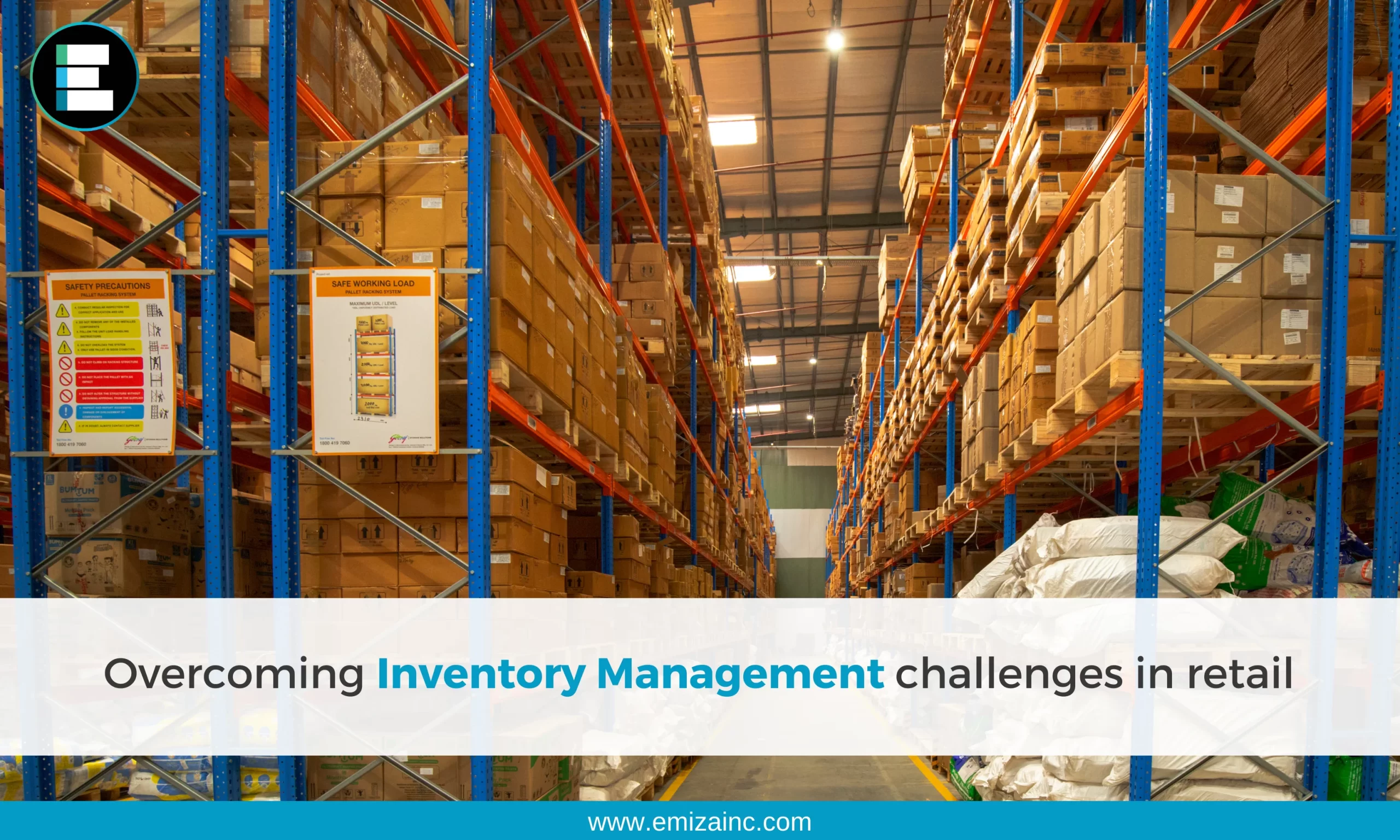Efficient inventory management is a critical aspect of running a successful retail business. It ensures that the right products are available at the right time, maximises sales potential, reduces costs, and enhances customer satisfaction. However, the complex nature of inventory management can present numerous challenges for retailers. Let’s explore some common inventory management challenges faced by retailers and discuss strategies to overcome them, thereby optimising inventory control and boosting overall business performance.
What are the Inventory Management Challenges
Inaccurate Demand Forecasting: Poor demand forecasting results in excess inventory, incurring carrying costs and potential obsolescence, or stockouts, leading to missed sales and customer dissatisfaction.
Poor Supplier Management: Disruptions in the supply chain, delayed deliveries, quality issues, or sudden supplier unavailability impact inventory management, leading to stockouts, longer lead times, and compromised product quality.
Inefficient Warehouse Operations: Suboptimal warehouse layouts, picking processes, and storage systems cause delays, errors, and increased costs, affecting order fulfilment speed and accuracy.
Returns and Reverse Logistics: Inefficient returns management processes increase handling costs, inventory discrepancies, and difficulties in restocking or refurbishing returned items, impacting customer satisfaction and profitability.
Lack of Data Visibility and Analytics: Insufficient access to real-time data and inadequate analytical tools hinder decision-making, resulting in missed sales opportunities, increased costs, and inefficient resource allocation.
Overcoming The Challenges
Demand Forecasting and Planning:
Accurate demand forecasting forms the foundation of effective inventory management. Insufficient forecasting can lead to stockouts or excess inventory, both of which negatively impact the bottom line. Retailers can overcome this challenge by leveraging historical sales data, market trends, customer insights, and advanced analytics tools to forecast demand accurately. Collaborating with suppliers and sharing sales data can also help align inventory levels with customer demand.
Seasonality and Trends:
Many retail businesses experience seasonal fluctuations or changing consumer trends that can significantly impact inventory management. For example, fashion retailers need to keep up with changing styles and trends, while seasonal products like holiday decorations require precise inventory planning. Retailers can address this challenge by closely monitoring market trends, analysing historical sales patterns, and adopting flexible inventory strategies such as just-in-time ordering or drop-shipping to adapt quickly to changing demands.
Supplier Management:
Maintaining effective relationships with suppliers is crucial for ensuring a smooth supply chain and minimising inventory management challenges. Late deliveries, quality issues, or sudden changes in supplier availability can disrupt inventory levels. Retailers can tackle this challenge by actively communicating with suppliers, implementing clear service level agreements (SLAs), and exploring alternative sourcing options. Establishing backup suppliers and negotiating favourable terms can help mitigate potential disruptions.
Warehouse and Storage Optimization:
Optimising your retail business’s warehouse space and storage efficiency is crucial to managing inventory effectively. Limited space, poor layout design, and inefficient picking processes can result in delays, misplaced items, and increased operational costs. Retailers can address this challenge by reorganising warehouse layouts, implementing proper storage systems, and utilising technology-driven inventory management solutions. Automated picking systems, optimised slotting strategies, and efficient order fulfilment processes can significantly improve your retail business’s warehouse operations.
Returns and Reverse Logistics:
Returns and reverse logistics can pose significant challenges for inventory management. Processing returns, managing damaged or expired goods, and efficiently reintegrating returned items into inventory require well-defined processes. Retailers can tackle this challenge by implementing a streamlined returns management system, conducting thorough product inspections, and offering customer-friendly return policies. Clear guidelines for restocking, refurbishing, or disposing of returned items help minimise losses and maximise asset recovery.
Data Analytics and Reporting:
Effective inventory management relies on accurate data analysis and reporting. Lack of access to real-time data or inadequate analytical tools can hinder decision-making and inventory optimization efforts. Retailers can overcome this challenge by investing in inventory management software that provides comprehensive reporting and analytics capabilities. These tools can help identify sales trends, optimise stock levels, and make informed decisions about purchasing, promotions, and markdowns.
Emiza’s Role In Inventory Management
Vast Owned Network of Fulfilment Centres: Emiza boasts a vast network of 20+ fulfilment centres, ensuring that your inventory is strategically positioned for efficient distribution. This enables faster order processing, reduced shipping costs, and improved customer satisfaction.
Fully Automated Processes Engineered for Scale: Emiza’s operations are fully automated, allowing for seamless and scalable inventory management. Automation minimises errors, speeds up processes, and improves overall operational efficiency.
Warehouse Management System (WMS): Emiza provides a robust warehouse management system that empowers you to set up bulk processing. This enables streamlined inventory handling, optimised storage, and efficient order fulfilment.
Reverse Shipping: Emiza offers reverse shipping services, simplifying the management of returns and reverse logistics, with lesser RTOs. With a streamlined returns process, you can efficiently handle returned items, reduce processing time, and ensure smooth inventory integration.
Fast Fulfilment: Emiza prioritises fast order fulfilment, helping you meet customer expectations and faster delivery. Quick and accurate order processing results in improved customer satisfaction and increased repeat business.
Choose Your Delivery Partners: Emiza allows you to choose your preferred delivery partners. This flexibility enables you to work with carriers that align with your business requirements, ensuring reliable and cost-effective compare and ship solutions.
Same Day Delivery (SDD) / Next Day Delivery (NDD): Emiza offers SDD and NDD services, catering to customers who require immediate or expedited delivery. This option enhances customer experience, especially for time-sensitive orders.
Branded Tracking Page: Emiza provides a branded tracking page, allowing you to maintain a consistent brand experience throughout the entire order fulfilment process. This helps build trust with customers and reinforces your brand image.
Conclusion
Emiza offers a range of solutions to help businesses address these challenges. With a vast network of strategically located fulfilment centres, fully automated processes engineered for scale, and a robust warehouse management system, Emiza streamlines inventory handling and order fulfilment.
To learn more about how Emiza can assist your business in overcoming inventory management challenges and improving overall efficiency, visit www.emizainc.com and explore their comprehensive inventory management solutions. Take control of your inventory and unlock the potential for growth and success in the retail industry.



